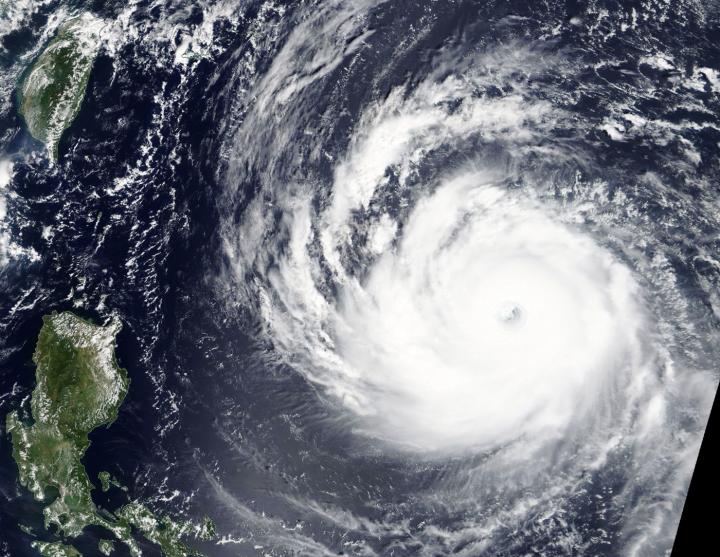NASA's Terra Satellite glares at the 37-mile wide eye of Super Typhoon Trami

At 9:50 a.m. EDT (1350 UTC) on Sept. 24, the MODIS instrument aboard NASA's Terra satellite provided a visible-light image of Super Typhoon Trami in the North Western Pacific Ocean. Credit: NASA Worldview, Earth Observing System Data and Information System (EOSDIS).
At 9:50 a.m. EDT (1350 UTC) on Sept. 24, the Moderate Resolution Imaging Spectroradiometer or MODIS instrument aboard NASA's Terra satellite provided a visible-light image of Super Typhoon Trami in the North Western Pacific Ocean.
The MODIS image showed that Trami has a symmetric eyewall surrounding a 37 nautical-mile round eye.
At 11 a.m. EDT (1500 UTC) on Sept. 24 the center of Super Typhoon Trami was located near latitude 19.4 degrees north and longitude 129.5 degrees east. It is located 445 nautical miles south-southeast of Kadena Air Base, Okinawa Island, Japan.
The Joint Typhoon Warning Center noted that the storm is moving toward the wet-northwest and this general motion is expected to continue. Maximum sustained winds are near 149.6 mph (130 knots/240.8 kph) with higher gusts.
Trami is expected to peak at 167 mph (145 knots/268 kph) in the next day before beginning a weakening trend.
Media Contact
More Information:
https://blogs.nasa.gov/hurricanes/tag/trami-2018/All latest news from the category: Earth Sciences
Earth Sciences (also referred to as Geosciences), which deals with basic issues surrounding our planet, plays a vital role in the area of energy and raw materials supply.
Earth Sciences comprises subjects such as geology, geography, geological informatics, paleontology, mineralogy, petrography, crystallography, geophysics, geodesy, glaciology, cartography, photogrammetry, meteorology and seismology, early-warning systems, earthquake research and polar research.
Newest articles

Properties of new materials for microchips
… can now be measured well. Reseachers of Delft University of Technology demonstrated measuring performance properties of ultrathin silicon membranes. Making ever smaller and more powerful chips requires new ultrathin…

Floating solar’s potential
… to support sustainable development by addressing climate, water, and energy goals holistically. A new study published this week in Nature Energy raises the potential for floating solar photovoltaics (FPV)…

Skyrmions move at record speeds
… a step towards the computing of the future. An international research team led by scientists from the CNRS1 has discovered that the magnetic nanobubbles2 known as skyrmions can be…




















